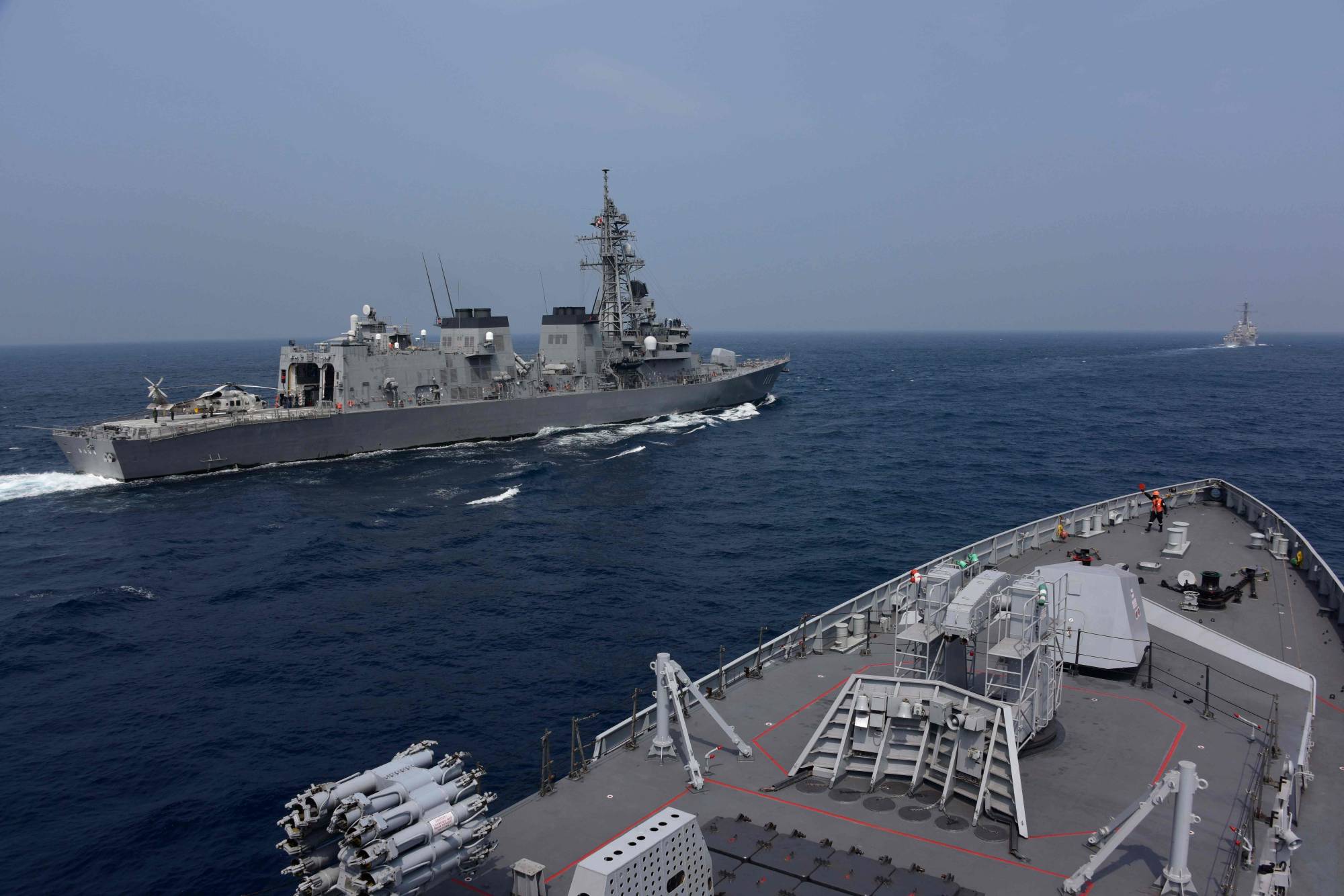QUAD navies gear up for Indo-Pacific challenge

With fighters and helicopters onboard Chinese aircraft carrier Liaoning conducting more than 100 take-offs and landings south of Okinawa this month and rattling Tokyo, all eyes are on the May 24 QUAD summit to counter the growing naval challenge in the Indo-Pacific.
While QUAD summit agenda is expected to be worked out this week through diplomatic channels, the Chinese carrier task force exercised that close to Japan for the first time, setting off alarm bells in Tokyo as the PLA Navy’s muscle-flexing remains focused on Taiwan and Japan.
Just as the PLA Navy is testing its long-range capabilities and acquiring long sea legs in the Indo-Pacific, the QUAD navies are seized of the challenge ahead with US Navy deploying top-of the line Arleigh Burke class destroyers, guided missile cruisers and nuclear-powered aircraft carrier USS Ronald Reagan at Yokosuka naval base near Tokyo and Sasebo Naval Base in Nagasaki to handle armed emergency in Taiwan.
The key change in US naval strategy in the Indo-Pacific is induction of anti-submarine warfare-capable MH-60R helicopter-carrying destroyers that can carry out long-range surveillance of Chinese warships and pose a threat to PLA submarines. The newly inducted US warships have built-in hangers for the ASW helicopters, revealing that the focus of the Biden administration is the Taiwan emergency and the Indo-Pacific. The MH-60R is a highly versatile helicopter with the capability to take out any sub-surface threat in the Indo-Pacific, particularly South China Sea.
